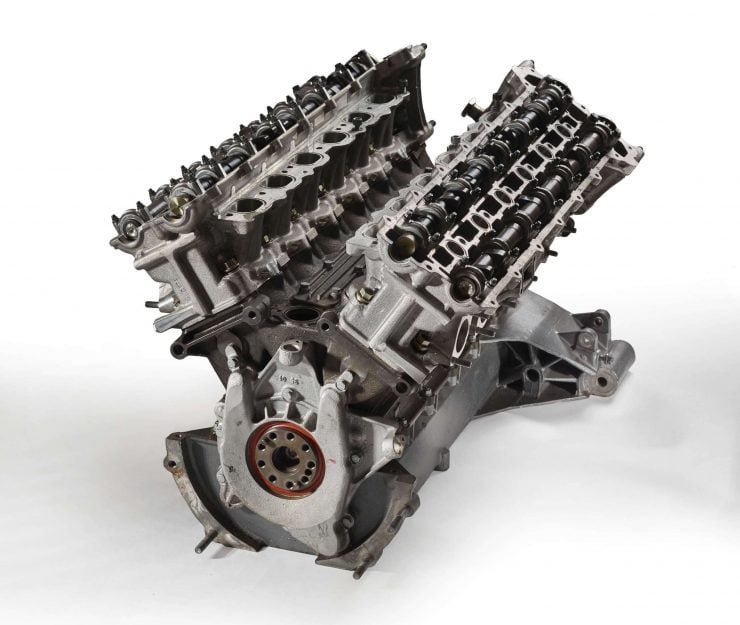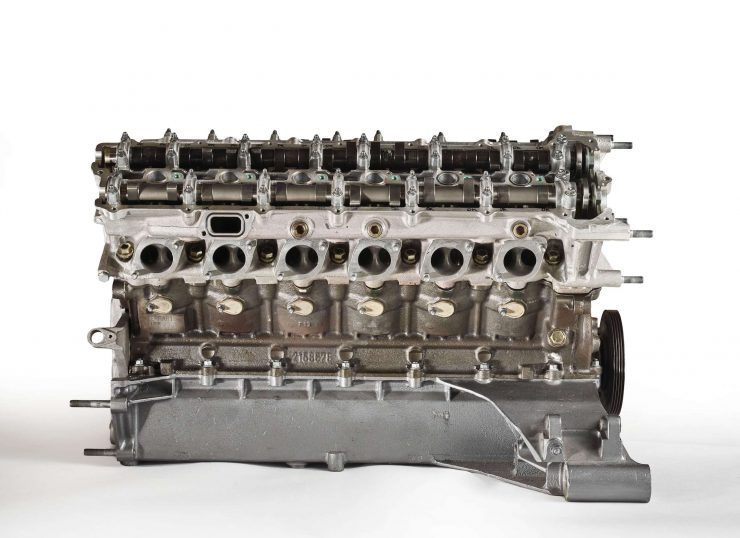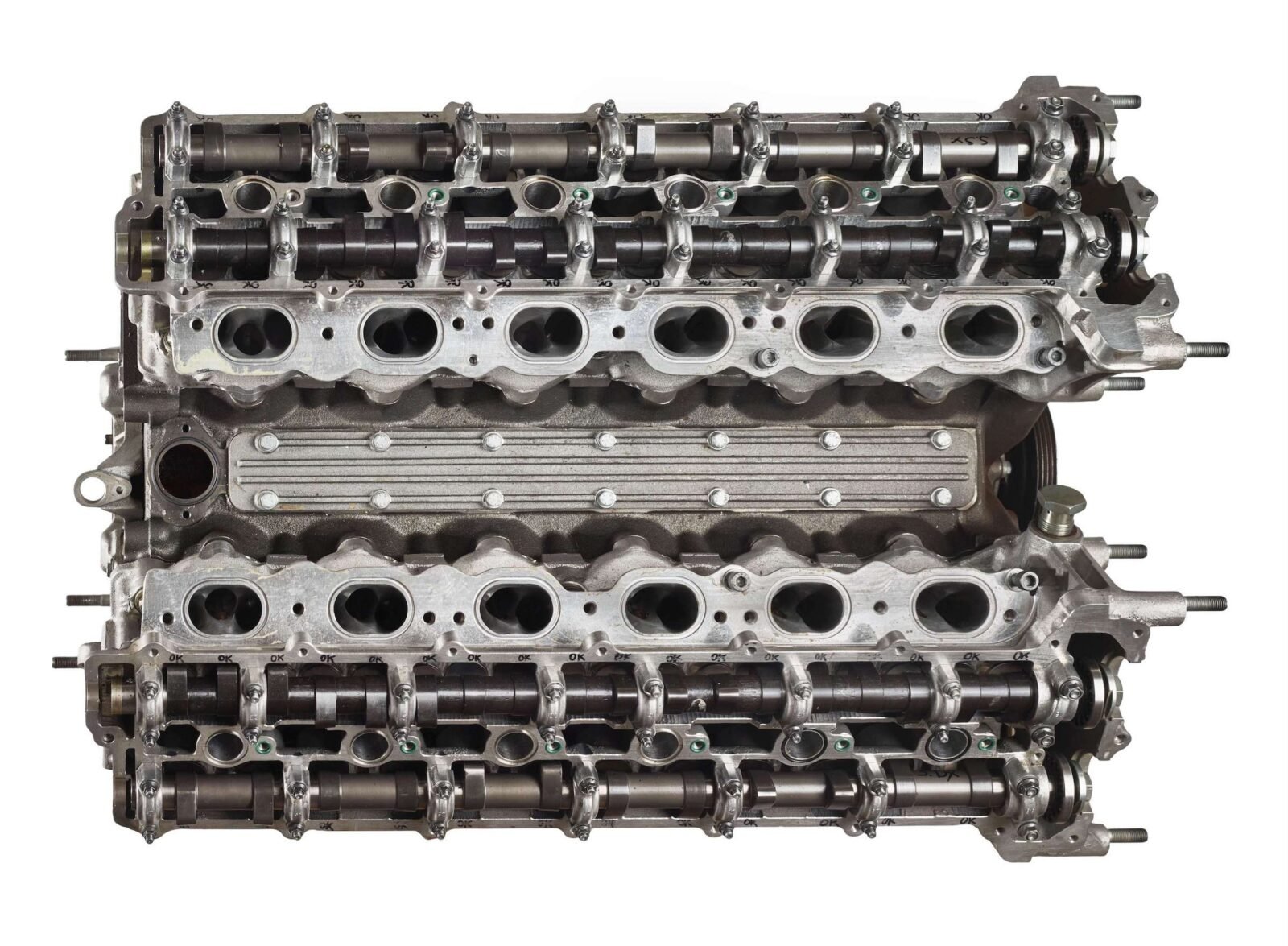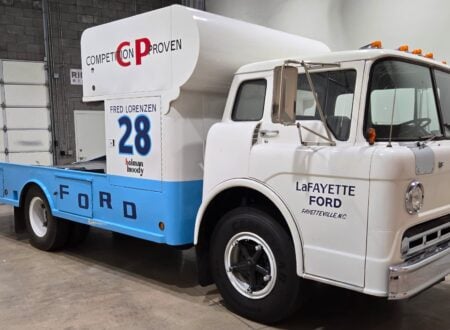This Ferrari F50 V12 engine was built to F50 GT specifications along with three chassis and another three or four race-specification engines.
The F50 GT (also known as the Ferrari F50 GT1) was built by Ferrari in collaboration with Michelotto and Dallara to compete in the BPR Global GT Series against the likes of the McLaren F1 GTR. Before the F50 GT could turn a wheel in anger on the track, the series folded. Ferrari decided not to compete in the FIA World Championship due to the fact that homologation specials like the Porsche 911 GT1 were allowed, and so the F50 GT program was cancelled.
A special version of the F50 V12 was developed for the GT, the production version of the F50 V12 was developed from the same unit used in the 1990 Ferrari 641 Formula 1 car. The standard F50 V12 is a naturally-aspirated 65° V12 with an iron block, aluminium heads, 5 valves per cylinder (3 intake, 2 exhaust), DOHC per bank, and it produces 512 bhp at 8,000 rpm, with 347 ft lbs at 6,500 rpm.
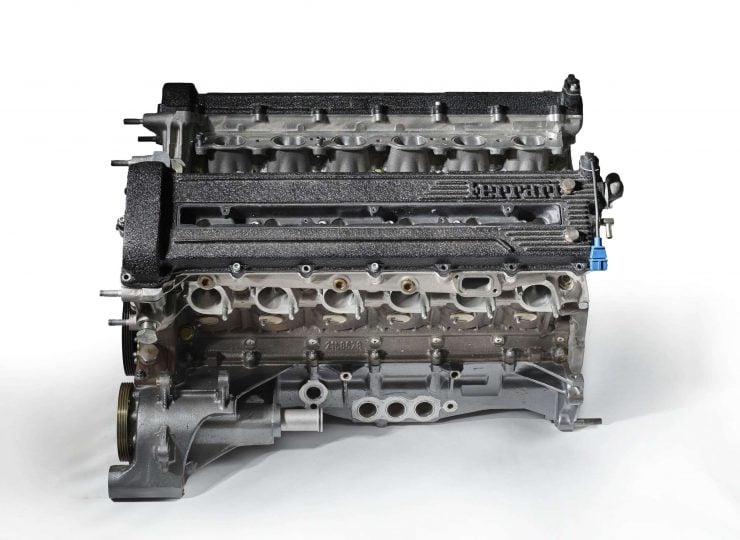
The race-spec version of the F50 V12 had its power increased to 740 hp to 10,500 rpm and 390 ft lbs of torque at 7,500 rpm. When fitted to the lightened race-spec F50 chassis it was capable of a hearty 376 km/h (233.6 mph), an 11.2 second ¼ mile at 208 km/h, and a 0 to 60 mph in 2.9 seconds.
Although not technically a crate engine of course, this unit was manufactured as a spare unit along with a small number of others, intended for use by race teams that sadly never had the chance to compete with the F50 GT.
It’s now being offered for public sale in Paris on the 10th of February with an estimated value of €70,000 to €100,000. It’ll likely be sold to a current F50 owner as a spare engine however there is a small chance it’ll end up being fitted to something a little more unusual. If you’d like to read more about it or register to bid you can click here to visit the listing on Artcurial.
